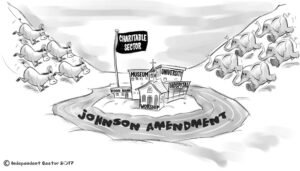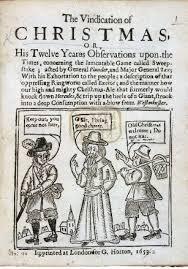The Texas Measles Outbreak: Beyond the Mennonite Community
Introduction to the Measles Outbreak
The recent measles outbreak in Texas has garnered significant attention due to its implications for public health and the greater community. Initially reported within the Mennonite community, this outbreak has extended beyond this population, affecting various regions in the state. The reemergence of measles, a highly contagious viral disease, exemplifies the potential risks associated with declining vaccination rates and the importance of herd immunity. As Texas grapples with this health concern, understanding the scope and implications of the outbreak is crucial for effective response and prevention measures.
Measles is known for its ability to spread rapidly, with a transmission rate that can exceed 90% among unvaccinated individuals. The current strain has raised alarm among health officials, and as reports emerge of infections in both vaccinated and unvaccinated individuals, the situation remains fluid. Areas predominantly affected include rural communities, where vaccination coverage has historically been low. This outbreak serves as a stark reminder of the vulnerability of communities to vaccine-preventable diseases and the ripple effects that can occur when immunization falls below recommended levels.
The significance of the Texas measles outbreak extends beyond immediate health concerns; it also underscores the need for increased awareness and education regarding vaccinations. Public health initiatives must aim to foster understanding of the importance of immunization not only for individual protection but also for community health. The response to this outbreak involves collaboration among healthcare providers, local health departments, and schools to ensure that accurate information is disseminated and that preventive strategies are effectively implemented.
As the situation continues to develop, vigilance and proactive measures will be essential in containing the outbreak and protecting the wider population from the consequences of measles. The community’s response to this challenge will profoundly impact efforts to maintain public health and prevent similar outbreaks in the future.
Understanding Measles: A Brief Overview
Measles is a highly contagious viral disease caused by the measles virus, which belongs to the Paramyxoviridae family. Characterized by its distinct symptoms, measles typically begins with a high fever, cough, runny nose, and inflamed eyes, followed by a characteristic red, blotchy rash that usually appears three to five days after the initial symptoms present. These symptoms can significantly impact an individual’s health, leading to discomfort and, in severe cases, complications.
The transmission of measles occurs primarily through respiratory droplets generated when an infected person coughs or sneezes. The virus is remarkably resilient, surviving outside the body for up to two hours in the air or on surfaces, which enhances its ability to spread. Individuals who are not vaccinated can become infected upon exposure, as measles is known for its high infectivity rate; it is estimated that 90% of susceptible individuals will contract the infection after close contact with an infected person.
Complications associated with measles can be severe, particularly in vulnerable populations such as young children, pregnant women, and immunocompromised individuals. While the majority of individuals recover without long-term consequences, severe complications include diarrhea, ear infections, and pneumonia. More critically, measles can lead to serious neurological complications, such as acute sclerosing panencephalitis (ASPE), which can occur years after the initial infection and has a high fatality rate.
Given the highly contagious nature of measles and the potential for serious health issues, vaccinations are crucial in preventing outbreaks. The measles, mumps, and rubella (MMR) vaccine has been proven effective in preventing infection and ultimately protecting communities from outbreaks, such as the one currently affecting Texas, which extends beyond the Mennonite community.
Historical Context of Measles in Texas
The history of measles outbreaks in Texas is a reflection of the broader public health landscape and societal attitudes toward vaccination. Measles, caused by the measles virus, has been a recognizable health issue since the mid-20th century. Prior to the introduction of the measles vaccine in 1963, outbreaks were common, with thousands of cases reported annually. The introduction of vaccination significantly reduced the incidence of this highly contagious disease. However, the socio-political climate surrounding vaccination has led to fluctuations in outbreak patterns over the decades.
In the 1980s and 1990s, Texas experienced a series of measles outbreaks, often linked to communities with lower vaccination rates. Notably, these outbreaks were sometimes exacerbated by misinformation regarding vaccine safety, which encouraged hesitant individuals to forgo immunizations. The 2000s showcased a generally declining trend in measles incidents, although localized outbreaks continued to emerge, particularly in ethnically and religiously homogeneous communities that tended to have lower vaccination rates.
Recent years have witnessed a resurgence of measles cases, reflecting broader national trends causing alarm among public health officials. This resurgence can often be traced back to communities with high levels of vaccine hesitancy. Specifically, within the Texas Mennonite community, cultural beliefs have contributed to resistance toward conventional vaccination practices, significantly impacting overall public health outcomes. This highlights the critical need for effective public health responses that consider cultural sensitivities while promoting vaccination.
Measles outbreaks in Texas serve as a reminder of the importance of vaccination and its role in protecting public health. Historical trends demonstrate that increased awareness, education, and targeted health campaigns are crucial for addressing the underlying factors that contribute to vaccine hesitancy. Understanding this history will inform strategies aimed at preventing future outbreaks, emphasizing the responsibility we all share in maintaining herd immunity.
The Role of the Mennonite Community
The recent measles outbreak in Texas has brought attention to various communities, particularly the Mennonite population known for their distinct beliefs and practices regarding healthcare. Understanding the role this community plays in the outbreak involves examining their vaccination rates, cultural perspectives, and the resulting implications on public health.
Traditionally, many Mennonite groups are characterized by a skepticism towards modern medicine, stemming from a belief in divine providence and a preference for natural remedies. This cultural mindset has often led to lower vaccination rates within these communities. For instance, studies have indicated that some factions of Mennonites in Texas are less likely to receive the measles vaccination, citing religious convictions and distrust in governmental health mandates. This aversion to vaccinations contributes significantly to the susceptibility of outbreaks, as herd immunity becomes compromised.
Moreover, the strong communal ties within Mennonite societies can further influence decisions regarding healthcare practices. Informal networks often prioritize communal opinions and traditions over public health recommendations. As a result, misinformation or negative perceptions about vaccines can spread rapidly within their communities, making it challenging to combat the effects of preventable diseases like measles.
The impact of the outbreak extends beyond the Mennonite community, affecting public health at large. High rates of unvaccinated individuals create an environment conducive to the transmission of infectious diseases. The interaction of the Mennonite population with other communities has also demonstrated how localized outbreaks can escalate, particularly in areas where vaccination rates are low.
Ultimately, addressing these challenges requires a multifaceted approach; it is essential to engage with the Mennonite community in culturally sensitive ways that respect their beliefs while highlighting the importance of vaccination for individual and public health safety. By fostering dialogue and building trust, it may be possible to improve vaccination participation and mitigate the risk of future outbreaks.
The Spread Beyond the Mennonite Community
The recent measles outbreak in Texas has indeed extended its reach beyond the initial focus within the Mennonite community. As of October 2023, several neighborhoods and demographic groups that were previously unaffected are reporting cases of the virus. This shift highlights the vulnerability of broader populations, particularly due to high mobility rates and the interconnectedness of various communities. In urban areas surrounding the original hotspots, instances of measles have been documented, prompting health officials to issue warnings aimed at heightening awareness and vaccination efforts.
One significant factor contributing to this expansion is the increasing number of unvaccinated individuals. While the Mennonite community is often cited due to its particular hesitance towards vaccination, studies indicate that vaccine hesitancy is a pervasive issue across diverse populations, fueled by misinformation and a growing distrust of conventional medical systems. Notably, this misinformation can spread rapidly through social media platforms, leading to decreased vaccination rates even in urban centers that previously maintained herd immunity.
Additionally, the demographics surrounding the outbreak have begun to evolve. Areas with large communities of immigrants or transient populations, such as local refugee camps and college towns, are at particular risk due to their varied cultural beliefs surrounding vaccination and health. These groups may have lower vaccination uptake, creating pockets where the measles virus can thrive and spread. Furthermore, public events and gatherings can inadvertently function as super-spreader events, exacerbating the outbreak if safety protocols are not observed.
Ultimately, the public health response must adapt to address these vulnerabilities. Community outreach initiatives aimed at educating and encouraging vaccination among all groups are essential for curbing the spread. Understanding the multifaceted factors contributing to this outbreak allows for more targeted strategies, benefiting not only the original Mennonite community but also the wider population facing this public health crisis.
Public Health Responses and Initiatives
The recent measles outbreak in Texas, particularly affecting the Mennonite community and beyond, has prompted significant public health responses from various officials and organizations. In a bid to control the outbreak, health authorities have prioritized vaccination campaigns. These initiatives target both high-risk populations, such as unvaccinated communities, and the general public. Educating the community about the importance of the measles vaccine has been a vital component of these efforts, reinforcing the need for immunizations to prevent future outbreaks.
In addition to vaccination campaigns, public health officials have engaged in extensive community outreach efforts. This has included organizing informational sessions, distributing educational materials, and collaborating with local leaders to reach residents more effectively. The objective is not only to encourage vaccination but also to provide accurate information regarding the disease and its potential complications. Local clinics and health departments have also played a crucial role, offering vaccination services and promoting awareness through social media platforms and community events.
Moreover, health authorities have implemented measures aimed at containing the further spread of measles. Increased surveillance and reporting systems have been established to monitor new cases and identify potential outbreaks at an early stage. Community clinics have been equipped to handle the influx of individuals seeking vaccines, ensuring a ready supply of immunizations. Contact tracing is also a critical element of the containment strategy, allowing health officials to identify and inform individuals who may have been exposed to the virus.
Through these coordinated public health responses and initiatives, officials aim to contain the outbreak effectively and safeguard the health of Texas residents. Vaccination remains the pivotal strategy in combating measles and preventing its resurgence within communities. Ultimately, these efforts not only address the immediate outbreak but also seek to instill long-term trust in vaccination as a critical public health measure.
Community Reactions and Misconceptions
The recent measles outbreak in Texas has prompted varied reactions across communities, particularly in regions significantly affected by the illness. While the outbreak has attracted attention, it has also fueled extensive discourse surrounding vaccinations. Some communities have expressed concern, reinforcing their commitment to immunization as a public health measure against preventable diseases like measles. Conversely, there are groups that hold skepticism towards vaccines, often fueled by misconceptions and misinformation regarding their safety and efficacy.
One common misconception is the false correlation between vaccines and the development of autism. Despite extensive research disproving this link, this belief persists and influences vaccination rates within communities. Individuals hesitant about vaccinations may view the measles outbreak as a justification for their skepticism, leading to further polarization. Misunderstandings are compounded by misinformation circulating on social media platforms, where anecdotal accounts often overshadow scientific evidence. This strain of misinformation impacts not only individual health decisions but also public health efforts aimed at achieving herd immunity.
The repercussions of these misconceptions extend beyond personal choice, significantly affecting broader community health. Unvaccinated individuals increase the risk of outbreaks, which, when coupled with a lack of awareness about the seriousness of measles, creates an environment conducive to the spread of the virus. Public health officials emphasize the need for clear and accurate communication to dispel myths surrounding vaccines. Educational campaigns that engage community leaders and utilize local channels are essential for rectifying misconceptions and improving vaccine uptake. As discussions around the outbreak continue, it remains imperative for communities to confront misinformation proactively to safeguard public health and ensure a collective response to the ongoing threat of measles.
Preventative Measures and Vaccination Importance
Vaccination remains one of the most effective strategies in preventing the spread of measles and other infectious diseases. Despite the overwhelming scientific evidence supporting immunization, vaccine hesitancy continues to pose a significant challenge, particularly in communities with differing beliefs about health interventions. In Texas, recent outbreaks have emphasized the critical need for increased vaccination rates, especially among populations at greater risk.
Currently, vaccination rates among Texas residents reflect a troubling trend. Many communities, particularly those influenced by non-mainstream beliefs regarding medical interventions, exhibit lower immunization levels. This has resulted in susceptible populations being exposed to measles, a disease that can cause severe complications. Comprehensive vaccination programs are essential for establishing herd immunity, which protects not only vaccinated individuals but also those who cannot be vaccinated due to medical reasons.
To address these issues effectively, public health officials and community leaders must prioritize education on the importance of vaccines. Targeted strategies may include community outreach programs, health workshops, and collaborations with trusted figures within various communities. Creating a supportive environment that encourages open discussions about vaccines can significantly reduce misinformation and apprehension that fuel vaccine hesitancy.
Additionally, employing media campaigns that highlight the benefits of vaccinations, such as personal stories from families affected by measles, can create a stronger connection to the importance of immunization. Access to vaccines must also be enhanced, ensuring that all individuals have opportunities to receive vaccinations conveniently and affordably.
In conclusion, fostering a culture of vaccination within communities, particularly those at heightened risk, is crucial in the fight against measles outbreaks. By implementing these preventative measures and addressing vaccine hesitancy through education and increased access, it is possible to safeguard public health and ensure a healthier future for all Texas residents.
Conclusion and Call to Action
The Texas measles outbreak has underscored the critical importance of vaccination and public awareness regarding communicable diseases. It is essential to recognize that the impacts of this outbreak extended beyond the Mennonite community and affected the broader public health landscape. In analyzing the factors that contributed to the outbreak, it becomes evident that misinformation and vaccine hesitancy play significant roles in the spread of preventable diseases. The Texas case serves as a reminder of the ripple effects that can arise from a localized public health issue, particularly in communities with low vaccination rates.
As we reflect on the implications of the measles outbreak, it is crucial for individuals and communities to prioritize health education. A proactive approach includes not only providing accurate information about the benefits of vaccinations but also addressing common misconceptions that often fuel resistance. Engaging conversations centred on the real risks of measles can empower family members and friends to make informed choices regarding vaccination. Community leaders, educators, and healthcare providers should collaborate to enhance the availability of credible resources regarding immunization schedules and how they protect both individuals and the community at large.
Furthermore, advocating for vaccination should become a shared responsibility. Encouraging local initiatives that promote vaccination awareness can significantly bolster efforts to inoculate vulnerable populations. Individuals should feel empowered to initiate discussions on this matter and share their knowledge on social media, at community gatherings, and educational forums. Lastly, staying informed about ongoing public health measures is paramount; understanding the evolving nature of contagious diseases can assist in collectively navigating challenges, thereby fostering a healthier environment for all.











Leave a Reply
You must be logged in to post a comment.